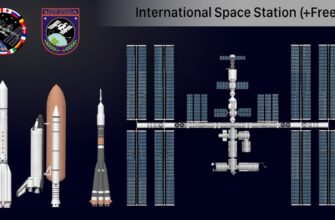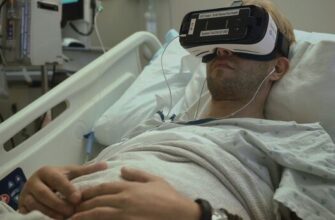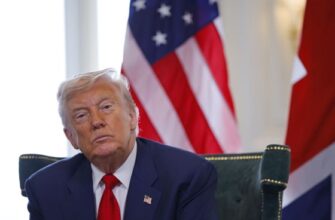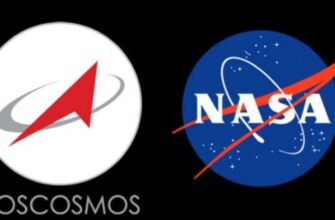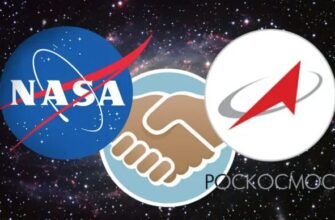In a testament to the enduring spirit of international cooperation, the head of Russia’s Roscosmos State Corporation, Dmitry Bakanov, is slated for a significant meeting with NASA leadership in the United States. This high-level engagement, set against the backdrop of a crucial Crew Dragon launch carrying a Russian cosmonaut, underscores the indispensable nature of collaboration in the unforgiving vacuum of space, even as terrestrial affairs remain complex.
A Legacy of Orbital Harmony
For decades, space exploration has served as a unique, often apolitical, arena for collaboration between nations. The International Space Station (ISS) stands as the pinnacle of this joint endeavor, a sprawling orbital laboratory where American astronauts, Russian cosmonauts, and their international counterparts live and work side-by-side. This remarkable orbital outpost, a feat of engineering and human ingenuity, operates on the very principle of interdependence.
The operational reality of the ISS dictates a level of cooperation that transcends geopolitical tensions. From shared life support systems to synchronized maneuvers, the segments — Russian and American alike — are inextricably linked. It’s a delicate dance of precision and mutual reliance, where the failure to cooperate could have dire consequences. This practical necessity has often seen space agencies maintain dialogue and joint programs even when diplomatic ties on Earth have frayed.
Cross-Flights: The Human Bridge
A cornerstone of this ongoing collaboration is the “cross-flight” program. This system ensures that both Russian Soyuz spacecraft and American commercial crew vehicles, like SpaceX`s Crew Dragon, regularly transport astronauts and cosmonauts regardless of their nationality. It`s a pragmatic arrangement that provides redundancy and ensures continuous human presence on the ISS.
Mr. Bakanov highlighted recent successes, noting past Soyuz launches from Baikonur carrying two Russian cosmonauts alongside a NASA astronaut, such as the mission involving Sergey Ryzhikov, Alexey Zubritsky, and Jonathan Kim. Conversely, upcoming Crew Dragon flights from Cape Canaveral, Florida, will see American astronauts joined by Russian cosmonauts. The imminent launch, scheduled for July 31st, is particularly noteworthy as it includes Russian cosmonaut Oleg Platonov as part of the crew. It is precisely during this launch event that the Roscosmos chief intends to conduct his discussions with NASA counterparts.
The Agenda: Beyond the Horizon
While the immediate focus of the meeting will undoubtedly revolve around the continued operational integrity and sustainability of the International Space Station, the discussions are poised to delve into broader aspects of future interaction and cooperation. Such high-level dialogues are critical for:
- Ensuring ISS Longevity: Addressing technical requirements, logistical challenges, and resource sharing for the station`s ongoing mission.
- Future Human Spaceflight: Exploring potential avenues for collaboration on projects beyond low-Earth orbit, including lunar programs like Artemis, where Roscosmos could offer unique expertise in areas such as long-duration space travel or radiation shielding.
- Scientific Exchange: Facilitating joint research initiatives and the exchange of scientific data collected from experiments aboard the ISS.
- Crisis Preparedness: Coordinating responses to potential emergencies or unforeseen circumstances in space.
An Orbital Irony: When Politics Take a Backseat to Physics
It’s not lost on observers that these significant discussions occur at a time when international relations remain… well, complicated. Yet, in the cosmic arena, the laws of physics and the shared ambition of pushing humanity`s boundaries often supersede Earth-bound disagreements. There`s a subtle, almost poetic irony in the fact that while diplomats on the ground might navigate delicate political minefields, astronauts and cosmonauts hundreds of miles above them continue to share meals, repair equipment, and conduct groundbreaking science as one unified crew.
This enduring collaboration is a pragmatic necessity. Space is inherently risky and expensive, and pooling resources and expertise greatly enhances safety, efficiency, and scientific output. The meeting between Roscosmos and NASA leadership serves as a timely reminder that despite the occasional turbulence in international skies, the pathway to the stars is often best traversed together.
Looking Ahead: The Final Frontier of Diplomacy
The dialogue between Dmitry Bakanov and NASA leadership is more than just a routine administrative meeting; it is a reaffirmation of a critical partnership in human space exploration. It demonstrates a shared commitment to a future where humanity’s reach extends further into the cosmos, propelled by cooperation rather than division. As Oleg Platonov prepares to embark on his journey aboard the Crew Dragon, the sight of Russian and American space leaders meeting on U.S. soil will serve as a potent symbol: even in a fractured world, the universe continues to inspire unity.



